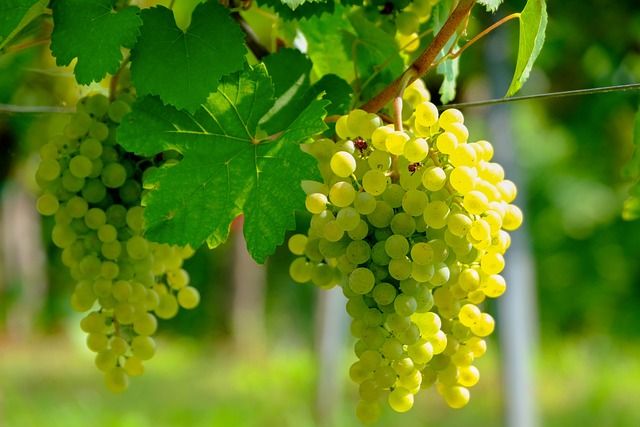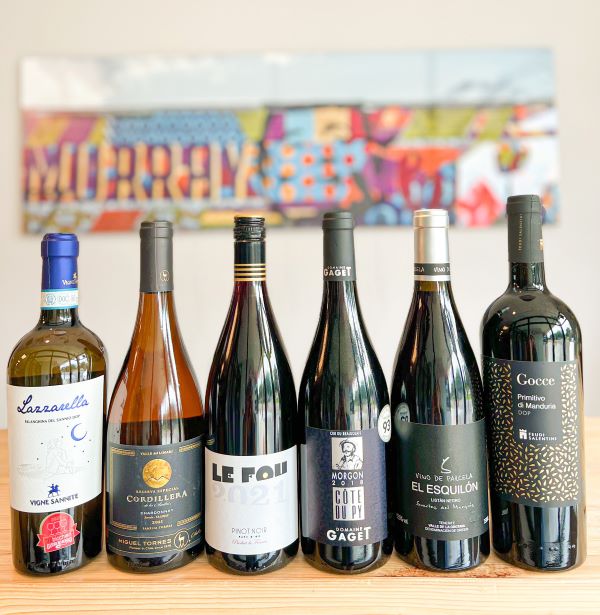Greek white wines are a hidden gem in the world of viticulture. With a history that spans thousands of years, these wines have evolved to offer a unique taste that captures the essence of Greece’s diverse terroirs. In this article, we will delve deep into the top 9 Greek white wines, exploring their characteristics and the regions they hail from.
1. Assyrtiko – The Star of Santorini a Classic Greek White Wine
- Wine Region: Santorini, South Aegean
- Sight: Pale gold with hints of green
- Aromatic Notes: Citrus, flint, and a touch of saltiness
- Tasting Notes: Lemon, green apple, and a distinct minerality
- Body: Medium to full-bodied with crisp acidity
Assyrtiko is arguably the most famous of Greek white wines. Originating from the volcanic island of Santorini, this wine is known for its robust character and high acidity, making it perfect for aging. Its unique mineral profile is a direct reflection of Santorini’s volcanic soil.
2. Moschofilero – A Floral Delight Greek White Wine
- Wine Region: Peloponnese, South Greece
- Sight: Pale straw-yellow
- Aromatic Notes: Rose petals, violets, and citrus
- Tasting Notes: White peach, orange blossom, and a hint of spice
- Body: Light to medium-bodied with vibrant acidity
Moschofilero is a fragrant and lively wine from the Peloponnese region. Its aromatic profile is reminiscent of a blooming garden, making it a favorite among those who appreciate floral white wines. The wine’s history is deeply rooted in the Peloponnese, where it has been cultivated for centuries.
3. Roditis – The Pink-skinned Wonder
- Wine Region: Throughout Greece, especially in the North
- Sight: Light salmon-pink
- Aromatic Notes: Red apple, citrus, and honey
- Tasting Notes: Pear, lemon, and a touch of almond
- Body: Medium-bodied with balanced acidity
Roditis is a versatile grape that produces some of the most refreshing white wines. Despite its pink skin, it’s used primarily for white wine production. Its widespread cultivation across Greece speaks to its adaptability and popularity.
4. Malagousia – The Resurrected Grape

- Wine Region: Macedonia, North Greece
- Sight: Golden yellow
- Aromatic Notes: Jasmine, mint, and melon
- Tasting Notes: Apricot, mango, and a hint of lime
- Body: Medium to full-bodied with a rich texture
Once nearly extinct, Malagousia has made a triumphant return to become one of the most sought-after Greek white wines. Its aromatic complexity and rich palate make it a favorite for those seeking a wine with depth and character. The northern region of Macedonia has played a pivotal role in its revival.
5. Savatiano – The Athenian Choice
- Wine Region: Attica, Central Greece
- Sight: Pale yellow-green
- Aromatic Notes: Lemon, green apple, and thyme
- Tasting Notes: Citrus fruits, olive, and a touch of vanilla
- Body: Medium-bodied with moderate acidity
Savatiano is the predominant grape variety in Attica and has been a staple in Greek white wines for ages. Often used in the production of Retsina, its resilience to heat makes it perfectly suited for the warm climate of central Greece.
6. Tsaoussi – The Islander’s Pride
- Wine Region: Cephalonia, Ionian Islands
- Sight: Pale gold
- Aromatic Notes: Pineapple, green tea, and white flowers
- Tasting Notes: Lemon zest, peach, and a mineral undertone
- Body: Light to medium-bodied with crisp acidity
Tsaoussi is a lesser-known gem among Greek white wines, offering a delicate and aromatic experience. The island of Cephalonia provides the ideal conditions for this grape, resulting in wines that are both refreshing and nuanced.
7. Robola – The Mountainous Marvel
- Wine Region: Cephalonia, Ionian Islands
- Sight: Bright yellow
- Aromatic Notes: Citrus, green apple, and wet stone
- Tasting Notes: Lime, pear, and a mineral finish
- Body: Medium-bodied with high acidity
Another pride of Cephalonia, Robola is grown in mountainous vineyards, giving it a distinct mineral profile. This is one of the Greek white wines that truly captures the essence of its terroir, offering a taste that’s as unique as the island itself.
8. Kydonitsa – The Quince Grape

- Wine Region: Peloponnese, South Greece
- Sight: Pale lemon
- Aromatic Notes: Quince, pear, and blossom
- Tasting Notes: Apple, honey, and a touch of spice
- Body: Medium-bodied with a smooth texture
Kydonitsa, named after the Greek word for quince, is a rare variety that’s making a comeback. Its aromatic profile is dominated by quince, making it a unique entry among Greek white wines. The southern region of Peloponnese is its main cultivation area.
9. Dafni – The Ancient Vine
- Wine Region: Crete, South Greece
- Sight: Pale greenish-yellow
- Aromatic Notes: Bay leaf, eucalyptus, and lime
- Tasting Notes: Green herbs, citrus, and a touch of pine
- Body: Light-bodied with sharp acidity
Dafni is one of the ancient Greek white wines that was nearly lost to time. Thanks to dedicated winemakers in Crete, this wine, with its herbaceous profile, has been reintroduced to the world, offering a taste of Greece’s rich winemaking history.
Greek white wines offer a diverse range of flavors, aromas, and histories. From the volcanic terrains of Santorini to the mountainous regions of Cephalonia, each wine tells a story of its homeland. Whether you’re a seasoned wine enthusiast or a curious beginner, there’s no doubt that Greek white wines have something special to offer.
The Future of Greek White Wines: A Rising Export Star?
The future looks promising for Greek white wines. As the global wine industry becomes more saturated with offerings from traditional wine-producing regions, there’s a growing appetite for something different. Greek white wines, with their unique profiles, are perfectly positioned to fill this gap.
Several factors indicate that Greece will likely be exporting more white wines in the future:
- Growing Recognition: International wine competitions and critics are increasingly recognizing the quality of Greek white wines. This global acknowledgment is boosting their reputation and demand.
- Investment in Winemaking: There’s significant investment in the Greek wine industry, both in terms of infrastructure and in research. This will undoubtedly lead to even higher quality Greek white wines in the future.
- Expanding Markets: While Greek white wines are popular in Europe, there’s a growing interest from markets in Asia and North America. As more consumers get a taste of these wines, the demand is set to rise.
If you want to learn more about Greek White Wines, review our article Best Wines in Athens Greece, to take a deeper dive into additional Greek white and red wines.










